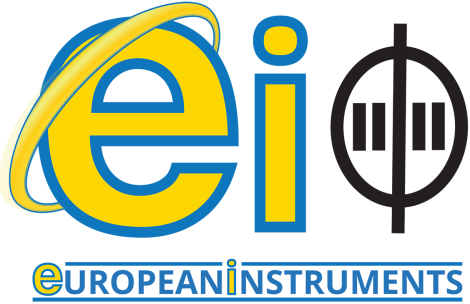European Instruments service and calibrate pipettes to ISO and UKAS standards and supply a certificate of calibration to the customer showing the performance of the pipette. Pipette Calibration Limits can then be applied to these results to assess for suitability of use. But where do these Pipette Calibration Limits come from?
Using ISO 8655 Pipette Calibration Limits
All European Instruments UKAS Certificates are assessed against the limits tables detailed in ISO 8655-2:2022, our engineer will advise if any pipette does not meet these limits, if you require a conformity statement made on the certificate then please advise us using the Pipette Application Form that will be provided prior to calibration.
Using Customer Supplied Pipette Calibration Limits
Many customers have limits they would like us to apply to the calibration results. When a customer does supply limits, European Instruments can input these limits into our calibration software and the software will assess if the customer’s limits are being met.
Using European Instruments Standard Pipette Calibration Limits
Many customers however do not have specific limits that they would like applied to the calibration results, but rely upon us as the service provider to let you know when a pipette is no longer performing. UKAS Calibrations will be assessed against ISO 8655, our standard level certificates will be assessed against our “EI Standard Pipette Limits”. Our limits have been determined based upon our experience of pipettes in use, manufacturer specification and looking at relevant pipette standards such as ISO 8655. These limits have been set to assess the performance of the pipette over its lifetime.
Key Points of EI Standard Pipette Calibration Limits
- They are based on our many years of experience and in line with standards such as ISO8655.
- They allow for effects such as age of the pipette and tip selection.
- They are realistic against manufacturer’s “out of box” specifications.
- They are the same for each pipette volume being calibrated regardless of make or model.
- They comply with ILAC G8 binary decision rules where the TUR≥1 is required.
Tables of Pipette Calibration Limits
UKAS – ISO 8655-2:2022
| Nominal Volume (ul) | Setting (%) | Accuracy (%) | CV (%) |
|---|---|---|---|
| 1 to 3 | 100 50 10 | 2.5 5 25 | 2 4 20 |
| >3 to 5 | 100 50 10 | 2.5 5 25 | 1.5 3 15 |
| >5 to 10 | 100 50 10 | 1.2 2.4 12 | 0.8 1.6 8 |
| >10 to 50 | 100 50 10 | 1 2 10 | 0.5 1 5 |
| >50 to 5000 | 100 50 10 | 0.8 1.6 8 | 0.3 0.6 3 |
| >5000 to 20000 | 100 50 10 | 0.6 1.2 6 | 0.3 0.6 3 |
| Nominal Volume (ul) | Setting (%) | Accuracy (%) | CV (%) |
|---|---|---|---|
| 2 | 100 50 10 | 8 16 25 | 8 16 25 |
| >2 to 5 | 100 50 10 | 5 10 25 | 3 6 25 |
| >5 to 10 | 100 50 10 | 2.4 4.8 24 | 1.6 3.2 16 |
| >10 to 20 | 100 50 10 | 2 4 20 | 1 2 10 |
| >20 to 50 | 100 50 10 | 2 4 20 | 0.8 1.6 8 |
| >50 to 2000 | 100 50 10 | 1.6 3.2 16 | 0.6 1.2 6 |
| Nominal Volume (ul) | Setting (%) | Accuracy (%) | CV (%) |
|---|---|---|---|
| 5 | 100 50 10 | 2.5 5 25 | 1.5 3 15 |
| >5 to 10 | 100 50 10 | 2 4 20 | 1 2 10 |
| >10 to 20 | 100 50 10 | 2 4 20 | 0.8 1.6 8 |
| >20 to 100 | 100 50 10 | 1.4 2.8 14 | 0.6 1.2 6 |
| >100 to 1000 | 100 50 10 | 1.2 2.4 12 | 0.4 0.8 4 |
Notes:
(i) Values not shown on this chart, shall be calculated by dividing the nominal volume by the selected volume and multiplying the result by the maximum permissible error at nominal volume, with a maximum error of 25%.
(ii) Fixed volume pipettes will be tested against the 100% error limit only.
EI Standard Limits
| Nominal Volume (ul) | Setting (%) | Accuracy (%) | CV (%) |
|---|---|---|---|
| 1 | 100 50 10 | 12 24 48 | 6 12 24 |
| 2 | 100 50 10 | 6 12 48 | 3 6 24 |
| 5 | 100 50 10 | 3 6 24 | 1.5 3 12 |
| 10 | 100 50 10 | 1.5 3 12 | 0.8 1.5 6 |
| 20 to 50 | 100 50 10 | 1 2 8 | 0.5 1 4 |
| 100 to 20000 | 100 50 10 | 0.8 1.6 6.4 | 0.4 0.8 3.2 |
Notes:
(i) For pipettes with nominal values not shown, the next highest nominal will be used and calculated pro-rata.
(ii) Fixed volume pipettes will use the nominal value only.
(iii) Multichannel pipettes will have each channel assessed independantly.

